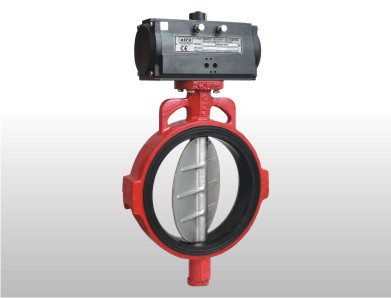Pneumatically actuated butterfly valves are essential to regulating airflow in many systems. By understanding how they work and how they can improve airflow control, you can make sure your systems are operating at peak efficiency.
Introduction
Pneumatically actuated butterfly valves are used to control airflow in various applications. HVAC systems often use them to regulate air flow through a duct. Butterfly valves can also be used in pneumatics and hydraulics.
Pneumatically actuated butterfly valves have several advantages over other types of valves. They are relatively easy to install and maintain and can be operated manually or automatically. Butterfly valves also have a good seal, which helps to prevent leaks.
Pneumatically actuated butterfly valves are available in a variety of sizes and materials. The most common materials used for these valves are plastic and metal. Plastic butterfly valves are often used in applications where there is a need for a lightweight valve, such as in pneumatic systems. Metal butterfly valves are typically used in heavier-duty applications, such as hydraulics.
When choosing a pneumatic actuated butterfly valve, it is essential to consider the application in which it will be used. The operating conditions, such as pressure and temperature, will determine the size and material of the valve. Selecting a valve compatible with the pneumatic system in which it will be installed is also essential.
What are Pneumatic Actuated Butterfly Valves?
Pneumatically actuated butterfly valves are a type of valve that uses compressed air to open and close. They are often used in applications requiring precise airflow control, such as HVAC systems.
Pneumatically actuated butterfly valves have several advantages over other types of valves. One advantage is that they can be opened and closed quickly, which is essential in applications where airflow needs to be controlled precisely. Another advantage is that they require very little maintenance, as there are no moving parts that can wear out over time.
Pneumatically actuated butterfly valves are available in various sizes and materials, making them suitable for use in a wide range of applications. They are also relatively easy to install, which makes them a popular choice for many businesses.
How do Pneumatic Actuated Butterfly Valves Improve Airflow Control?
Pneumatically actuated butterfly valves improve airflow control by providing a quick and efficient way to open and close the valve. The lack of moving parts also means less wear and tear over time, which can result in a longer life for the valve. Pneumatically actuated butterfly valves are available in various sizes and materials, making them suitable for use in a wide range of applications.
Why is Airflow Control Important?
Airflow control is essential in various applications where precise airflow control is required. In HVAC systems, for example, airflow control is used to regulate the temperature and humidity of the air. By controlling the amount of air allowed to flow into a room, HVAC systems can maintain a comfortable environment for occupants.
Pneumatically actuated butterfly valves are ideal for applications requiring precise airflow control. They offer several advantages over other valves, including the ability to open and close quickly and the lack of moving parts that can wear out over time. Pneumatically actuated butterfly valves are available in various sizes and materials, making them suitable for use in a wide range of applications.
Conclusion
Pneumatically actuated butterfly valves are an excellent choice for precise airflow control applications. They offer many advantages over other valves, including quick operation and minimal wear and tear. With a wide variety of sizes and materials available, pneumatically actuated butterfly valves can be tailored to meet the needs of any application.

